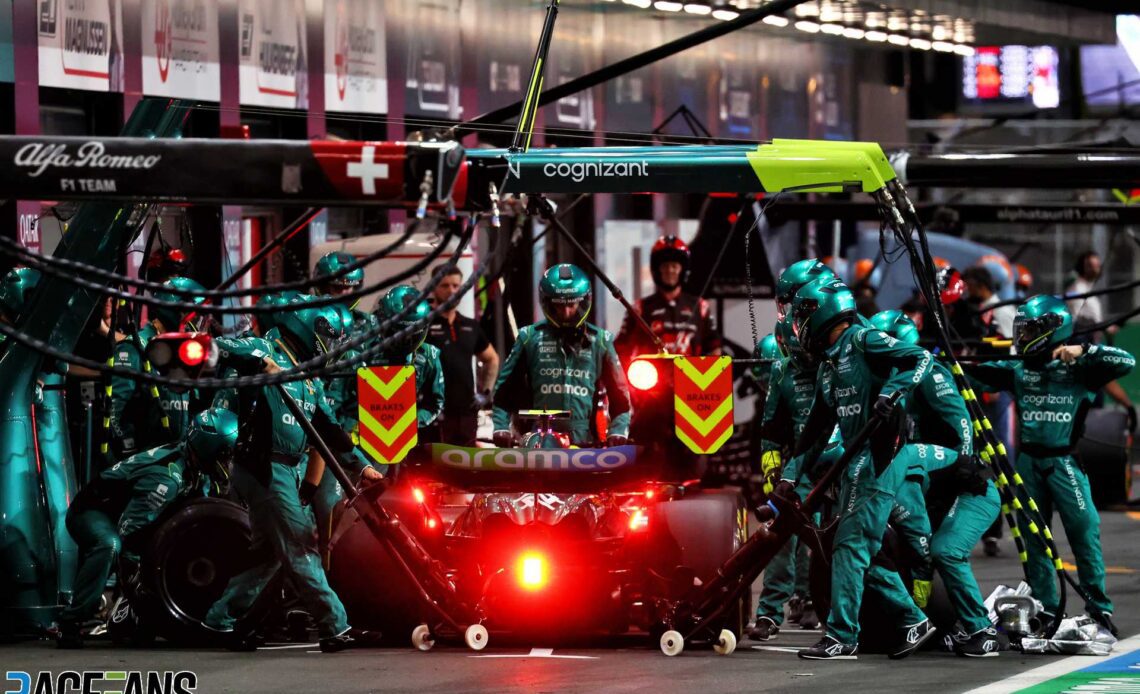The FIA has issued a sporting directive to clarify what counts as “working on the car” when teams serve pit stop time penalties after confusion with Fernando Alonso in Jeddah.
The first two rounds of the Formula 1 season have both seen drivers handed penalties by the stewards due to their teams judged to have been “working on the car” while serving five-second time penalties during the penalty period.
Article 54.4(c) of the F1 sporting regulations states that when a car is serving a penalty it “may not be worked on until the car has been stationary for the duration of the penalty.”
Esteban Ocon was handed a ten second penalty in Bahrain after an Alpine team member touched his car while serving a penalty and Alonso was originally handed a ten second penalty after the Saudi Arabian Grand Prix after the rear jack touched his car while also serving a penalty, costing him his podium finish.
However, after Aston Martin exercised their right to review of the penalty and presenting seven separate instances of cars being touched by the rear jack while serving penalties without being penalised, the stewards cancelled Alonso’s penalty and restored his third place.
In light of the incident, the FIA has now issued a sporting directive to address the “lack of clarity in the wording” of the regulation and “conflicting precedents” that Alonso’s original penalty had revealed. From now on, all “physical touching” of cars or drivers “by hand, tools or equipment (including the front and rear jacks)” during the period of a penalty being served with now be considered as “work” on the car and in breach of the regulations.
The FIA has also confirmed that grid boxes will be widened by 20cm and a centre line added to assist drivers in finding their grid slot at the start of a race. Both Ocon and Alonso’s original penalties were due to being in an inaccurate starting position on the grid, a rule that has been reiterated for 2023.
Several drivers have complained that the current generation of F1 cars offer low visibility of grid markings which has been reduced in part due to the move to 18-inch wheels in 2022. The new widened grid slots will be trialled during this weekend’s Australian Grand Prix, with the FIA gathering feedback from drivers following the race weekend.
The FIA also noted that “several other elements” of the sporting regulations are being reviewed with potential clarifications or redefining to avoid future confusion.
Advert |
Click Here to Read the Full Original Article at RaceFans…

